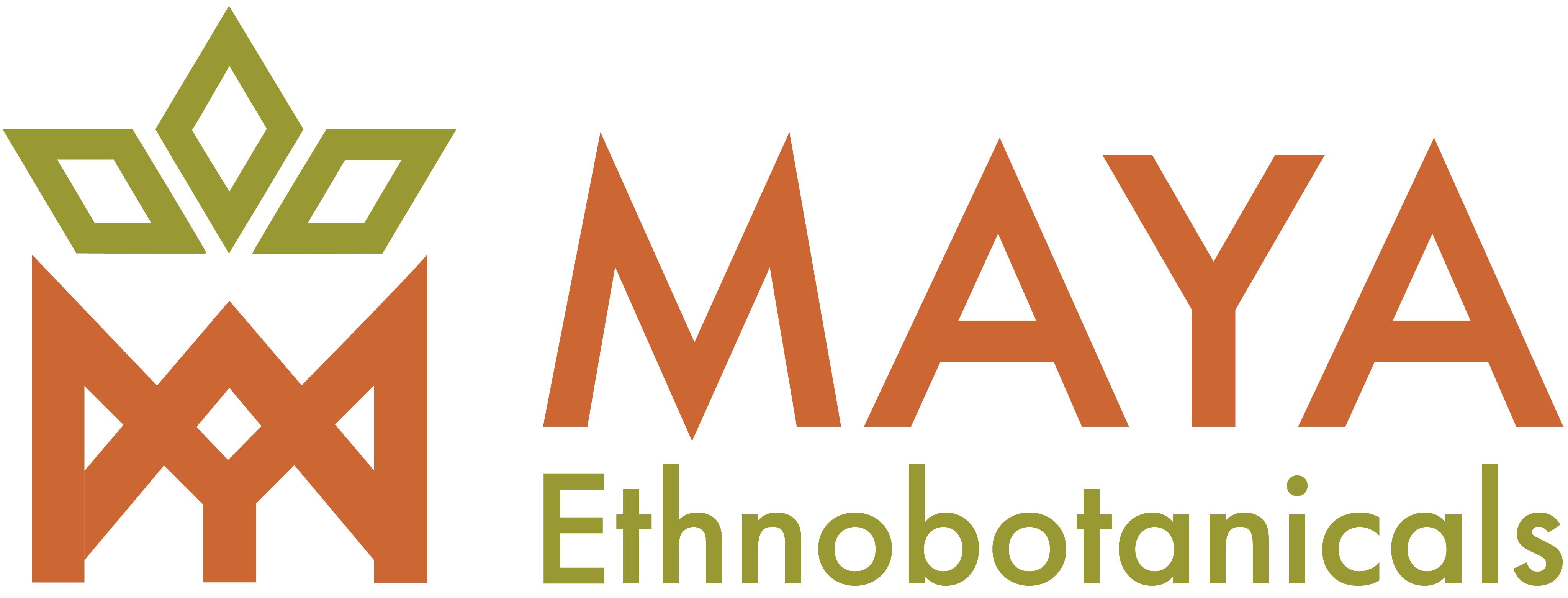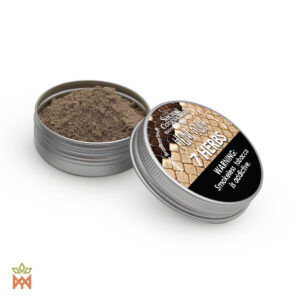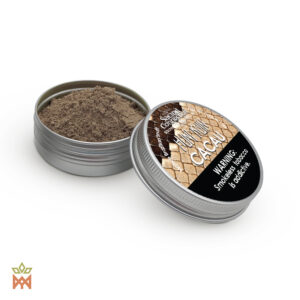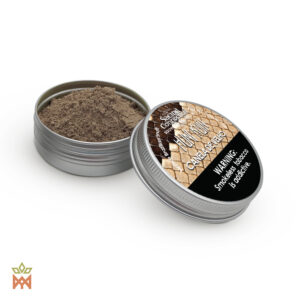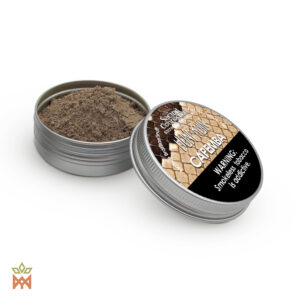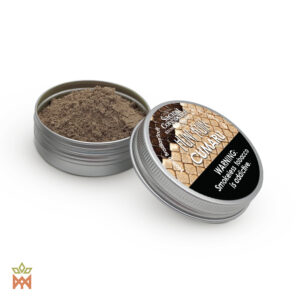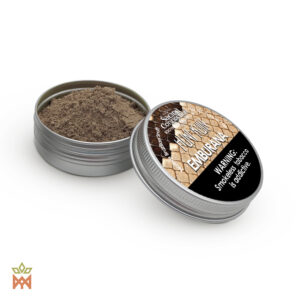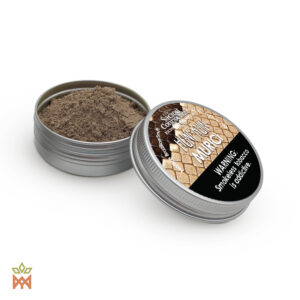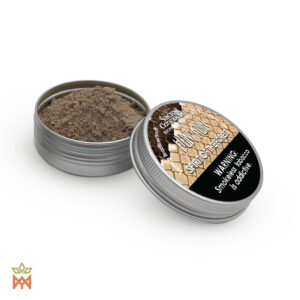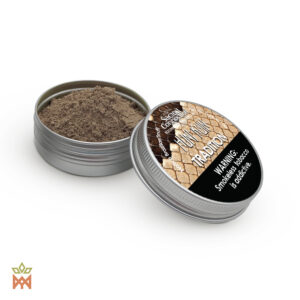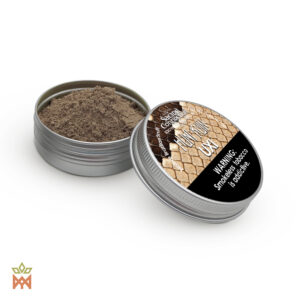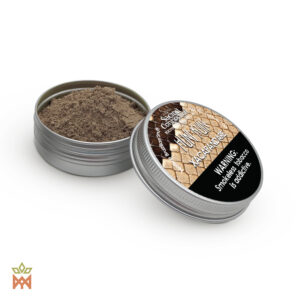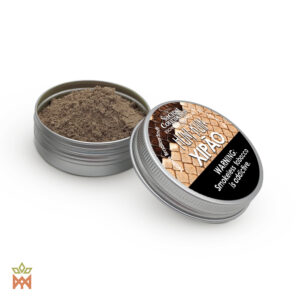
Huni Kuin
One of the most distinctive aspects of Huni Kuin shamanism is the use of sacred snuff, or Rapé, as a powerful tool for spiritual growth, healing, and communion with the divine.
Showing 1–12 of 13 results
- € 20,00 Incl. VATSelect options This product has multiple variants. The options may be chosen on the product page
- € 20,00 Incl. VATSelect options This product has multiple variants. The options may be chosen on the product page
- € 20,00 Incl. VATSelect options This product has multiple variants. The options may be chosen on the product page
- € 20,00 Incl. VATSelect options This product has multiple variants. The options may be chosen on the product page
- € 20,00 Incl. VATSelect options This product has multiple variants. The options may be chosen on the product page
- € 20,00 Incl. VATSelect options This product has multiple variants. The options may be chosen on the product page
- € 20,00 Incl. VATSelect options This product has multiple variants. The options may be chosen on the product page
- € 20,00 Incl. VATSelect options This product has multiple variants. The options may be chosen on the product page
- € 20,00 Incl. VATSelect options This product has multiple variants. The options may be chosen on the product page
- € 20,00 Incl. VATSelect options This product has multiple variants. The options may be chosen on the product page
- € 20,00 Incl. VATSelect options This product has multiple variants. The options may be chosen on the product page
- € 20,00 Incl. VATSelect options This product has multiple variants. The options may be chosen on the product page
Showing 1–12 of 13 results
Who are the Huni Kuin
The Huni Kuin, also known as the Kaxinawa, are an indigenous tribe living in the dense forests of the Brazilian Amazon. With a rich cultural heritage and deep spiritual traditions, the Huni Kuin have preserved their unique way of life for generations. Central to their culture is the practice of shamanism, which plays a pivotal role in their society and spirituality.
Shamanism among the Huni Kuin is a complex and multifaceted tradition that encompasses a wide range of practices, rituals, and beliefs. At the heart of Huni Kuin shamanism is the belief in the interconnectedness of all living beings and the spiritual realms that exist beyond the physical world. Huni Kuin shamans, known as Pajés or Mestres, serve as mediators between these realms, communicating with the spirits of nature, ancestors, and other beings to heal, protect, and guide their communities.
Huni Kuin Shamans
“The shaman gives and takes life. To become a shaman, you go alone into the forest and wrap your entire body in embira. You lie down at an intersection with your arms and legs outstretched. First come the night butterflies, the husu, who completely cover your body. Next comes the yuxin who eats the husu until reaching your head. Then you grab him tightly. He transforms into a murmuru palm, which is covered in spines. If you’re strong enough and don’t let go, the murmuru transforms into a snake, which wraps around your body. If you keep hold, he transforms into a jaguar. You continue holding him. And this continues until finally you’re left holding nothing. You’ve won the ordeal and you can speak: you explain that you want to receive muka and he gives it to you.” [Siã Osair Sales]

The Huni Kuin claim that the true shamans, the mukaya, those containing within themselves the bitter shamanic substance called muka, have died out – though this has not prevented them from practicing other forms of shamanism, deemed less powerful but equally effective. Other capacities, such as knowing how to communicate with the yuxin (the spiritual realms), are possessed by many adults, especially older people.
Consequently, we could say that no shamans exist and – equally – that many exist. A salient feature of Huni Kuin shamanism is the importance of discretion in relation to a person’s potential to cure or cause illnesses. The invisibility and ambiguity of this power is linked to its transitory nature. Shamanism is more an event than a crystallized role or institution. This fact also derives from the strict abstinence from meat and women imposed on the mukaya shaman.
Ayahuasca consumption, considered the preserve of the shaman in many Amazonian groups, is a collective practice among the Huni Kuin, practiced by all adult men and adolescent boys who want to see ‘the world of the vine.’ The mukaya is one who does not need any substance, nor any outside help to communicate with the invisible side of reality. But all adult men are a little bit shaman to the extent that they learn to control their visions and their interactions with the world of the yuxin.
Two easily observable facts that point in this direction are the frequent and public use of ayahuasca (approximately two or three times per month) and the long solitary treks undertaken by some older people without any intention of hunting or fetching medicinal plants (the usual explanation for such walks). These two activities show an active search to establish an intense contact with yuxinity.
Huni Kuin Rapé
One of the most distinctive aspects of Huni Kuin shamanism is the use of sacred snuff, or Rapé, as a powerful tool for spiritual growth, healing, and communion with the divine. Rapé is a traditional preparation made from powdered tobacco and various medicinal plants, which is blown into the nostrils using a special pipe called a Tepi. Huni Kuin Rapé is renowned for its potency and purity, as well as the deep spiritual insights and healing experiences it can induce.
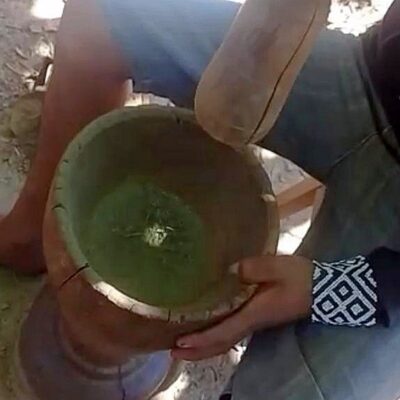
In Huni Kuin culture, Rapé is considered a sacred medicine that facilitates connection with the spiritual world and the forces of nature. It is used in a variety of contexts, including healing ceremonies, rituals, and everyday life. Huni Kuin shamans prepare Rapé with great care and reverence, selecting and blending the ingredients according to ancient recipes and their own intuitive guidance.
The use of Rapé is often accompanied by prayers, chants, and other rituals designed to invoke the blessings of the spirits and create a sacred space for healing and transformation. When consumed, Rapé can induce a wide range of effects, from heightened awareness and clarity of mind to profound emotional release and spiritual awakening. Many Huni Kuin people report experiencing visions, insights, and revelations while under the influence of Rapé, which they interpret as messages from the spirit world.
In addition to its spiritual and therapeutic benefits, Rapé also serves as a communal practice that strengthens social bonds and fosters a sense of unity and connection among the Huni Kuin people. Sharing Rapé with others is a deeply ingrained tradition in Huni Kuin culture, symbolizing generosity, hospitality, and mutual support.
Overall, Huni Kuin shamanism and the use of Rapé are integral parts of the tribe’s identity and way of life. Through these practices, the Huni Kuin continue to uphold their ancestral traditions, honor the wisdom of their elders, and navigate the challenges of modernity while remaining rooted in their cultural heritage and spiritual heritage.
Huni Kuin Shamans: Understanding the Mysteries of Yuxinity
The Huni Kuin people, also known as the Kaxinawa, inhabit the lush forests of the Brazilian Amazon, where their rich cultural heritage and deep spiritual traditions have flourished for generations. Central to their culture is the practice of shamanism, which plays a pivotal role in their society and spirituality.
Shamanism among the Huni Kuin is a multifaceted tradition, with various forms and expressions. While they claim that the true shamans, the mukaya, have died out, the practice of shamanism continues in other forms, considered less potent but equally effective. Many adults, especially the elders, possess shamanic capacities, such as communicating with the yuxin, the spiritual realms.
The concept of shamanism among the Huni Kuin is fluid and dynamic, with no rigid roles or institutions. Shamanism is more of an event than a fixed position, often characterized by discretion regarding one’s ability to cure or cause illnesses. The power of a shaman is transient and elusive, closely tied to the muka, a bitter shamanic substance believed to reside within them.
Ayahuasca consumption, traditionally reserved for shamans in many Amazonian cultures, is a collective practice among the Huni Kuin. It is used by adult men and adolescent boys as a means to explore the spiritual realms and gain insights into the mysteries of existence. While the mukaya shaman does not require external substances to communicate with the invisible realms, all adult men are regarded as shamans to some extent, as they learn to navigate their visions and interactions with the world of the yuxin.
Yuxinity is a central concept in Huni Kuin shamanism, representing the interconnectedness of all living beings and the spiritual forces that permeate the natural world. Yuxinity is not seen as supernatural but as an intrinsic part of nature, present in all living phenomena. The Huni Kuin believe that every person is composed of flesh and yuxin, with animals and plants also possessing their own yuxin.
The power of the yuxin, known as muka, is a central focus of Huni Kuin shamanism. Muka is the capacity for transformation and spiritual power, often concretized as a substance. Shamans, or mukaya, possess muka and have the ability to heal or harm without physical force. The initiation of a shaman depends on the will of the yuxin, with the chosen individual undergoing rigorous training and fasting to develop their spiritual powers.
Healers, known as huni dauya, specialize in using sweet remedies derived from plants to heal physical ailments. Unlike shamans, healers do not require fasting and continue with their normal activities while acquiring knowledge through apprenticeship.
Shamanic journeys, undertaken through dreams or trance induced by substances like rapé or ayahuasca, are essential for understanding the spiritual world and the causes of diseases. Shamans seek to establish connections with the yuxin, the spiritual entities responsible for both afflictions and cures. Through negotiation and ritual, shamans harness the power of the yuxin to facilitate healing and restore balance to the community.
In conclusion, Huni Kuin shamanism is a dynamic and multifaceted tradition that encompasses various practices and beliefs. From the exploration of altered states of consciousness to the negotiation with spiritual entities, Huni Kuin shamans play a crucial role in the spiritual and physical well-being of their communities, navigating the mysteries of yuxinity with wisdom and reverence.
Huni Kuin Medicine Men
The speciality of the huni dauya (a man with sweet remedies, a plant healer) normally does not combine with that of the huni mukaya (shaman). The healer’s learning process is very different to the shaman’s. If he does not use poisonous leaves, the healer does not need to fast and may engage in his normal activities of hunting and married life. His knowledge is acquired through apprenticeship under another specialist and requires a good memory and keen perception.
The first sign that someone has the potential to become a shaman – a developed relationship with the world of the yuxin – is failure in hunting. The shaman develops such a deep familiarity with the animal universe (or with the yuxin of the animals), including being able to converse with them, that he is unable to kill them: “and walking in the forest, an animal speaks to me. When he sees the deer, he calls out ‘hey, my brother-in-law,’ and he stopped still. When a peccary came, ‘ah,’ he called, ‘ah, my uncle,’ and he stopped. Then in our language he says ‘em txai huaí!’ (‘Hey, brother-in-law!’), so he doesn’t eat it.”
Consequently, the shaman doesn’t eat meat and not just for affective reasons. The impossibility of eating meat is also linked to the muka and to the change in the senses of smell and taste of the person with matured muka in his heart. The taste and aroma of meat become bitter.
The shaman is feared for his capacity to cause sickness and death without the need for physical action. He can shoot his muka (which is invisible when shot) into his victim from large distances, or he can persuade some of the yuxin with which he is familiarized to kill a person.
The larger the number of yuxin allied to the mukaya, the greater his power. Indeed, his power to cure resides in his capacity to negotiate as an active agent of the cure (when he goes to fetch the lost spirit of his patient residing among the yuxin) and in the quality and quantity of yuxin that he can convoke for a curing session, where the yuxin (his friends) act as agents of the cure working through (or gathered around) the shaman’s body.
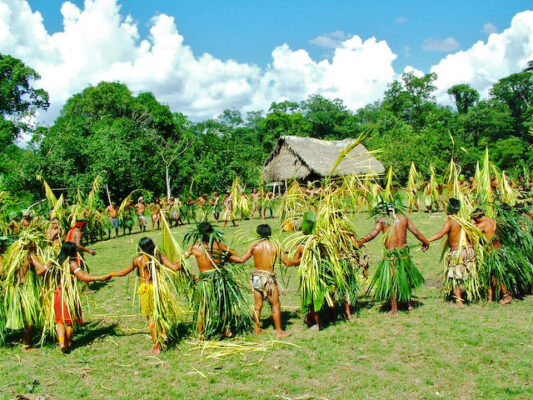
Shamanic Travels
Even so, the shamanic voyage still remains a crucial feature of Huni Kuin shamanism. The bedu yuxin travels free of the body in dreams, or when the shaman is in a trance induced by snuff or ayahuasca. These journeys fulfil other objectives besides curing a concrete case of sickness. They are exploratory trips, seeking to understand the world and the ultimate causes of diseases. They explore the paths that the dead person’s bedu yuxin must follow to reach the sky and strengthen relations with the spiritual world for the community’s well-being.
Various types of sickness exist: both material and spiritual. Poison-induced sicknesses are caused by the dauya (healer), while illnesses provoked by spiritual power (muka) have an enemy mukaya (shaman) at their source. A third type also exists: diseases caused by the yuxin, which involve the patient’s loss of his bedu yuxin. Diseases caused by the yuxin at the demand of a mukaya also mean a loss: the shaman’s muka may be stolen.
Sickness
The two types of sickness caused by humans are treated in different ways. Poison provokes a loss of liquids and vital forces (the patient vomits, has diarrhea and becomes anaemic). In this case, the shaman cures with his force: he inhales a type of snuff prepared especially for curing and blows it over the patient. When the cause is muka, the problem is not the same kind of loss as poison, but instead the presence of a negative force that takes the form of a foreign body that acts to destroy the body from the inside.
Muka-provoked sicknesses include acute pains in the liver, stomach or heart (three important organs in the Huni Kuin view of the human body). In this phase, a cure is still possible. The shaman sucks the painful area of the body to remove the invading object – the muka which the enemy shaman sent into the patient.
Shamanic thought among the Huni Kuin acts in permanent, omnipresent form. Although public rituals and curing sessions are no longer performed, we need to consider their cosmovision within the wider context of the practices of their neighbours (Yaminawa, Kulina, Kampa), with whom the Huni Kuin have had increasingly close relations since ceasing to be enemies. Exchange between the groups is intense and may act as a stimulus for the Huni Kuin to revive their spiritual powers, stored in the memory of the forest.
For the Huni Kuin, the human person is conceived in three parts: the body or flesh (yuda), the body’s spirit or shadow (yuda baka yuxin) and the spirit of the eye (bedu yuxin). Flesh or any living body transforms into dust when its yuxin aspect is removed.
Shamanic Initiation
There are various ways of being initiated into shamanism. Some result from a deliberate search on the apprentice’s part, others occur spontaneously due to the initiative of the yuxin who capture the chosen person unprepared. The presence of muka in the initiate’s heart, a necessary condition for any exercise of shamanic power, depends in the last instance on the will of the yuxin.
There are two ways in which the apprentice can increase the likelihood of an encounter with the yuxin so that these beings can plant the embryo of his muka in him: he may augment his dream experiences by sleeping a lot and using remedies (dripping the sap of certain leaves into his eyes or bathing water) in order to dream more and remember the dreams. Alternatively he may walk on a forest path, covering himself with embira or murmuru palm shoots (pani xanku) and aromatic leaves, singing and whistling to summon the yuxin.
The taste of things also provides information on their yuxin quality. Some things only a yuxin or animal will eat: husu, a blood-sucking nocturnal butterfly, is one of their preferred foods, along with mai xena, earthworms. But the idea of eating this fills humans with disgust. A person in a trance, under the effect of the yuxin, eats leaves as though they were food.
Another characteristic related to taste is that humans do not eat anything raw: at most a fruit from the forest, or in the case of children, a ripe banana when they are too hungry to wait for mealtime. It is also rare for someone to drink water. The yuxin, by contrast, typically eat raw things and are especially thirsty for raw blood: all animals and insects that suck blood are yuxin.
On being initiated, the young shaman must follow the paths indicated by smells, sounds and images that lead to contact with the yuxin. To avoid death, he needs to have a strong heart: death results from the collapse of the heart from fear. Collapse during initiation (death or madness) may occur due to the incapacity of the initiate/chosen one/victim to forge the bridge between the two sides of reality.
During the period which begins with the first ‘assault’ of the yuxin and ends when the muka has matured, the initiate shaman will show signs of weakness, yet this liminal phase is necessary to the process of learning from the yuxin. The apprentice is uninterested in social obligations and body processes because his mind is focused on the spiritual world. Most of the time he remains lying in his hammock or wanders randomly in the forest. However, these ‘symptoms’ are not interpreted as a sickness.
Buy Huni Kuin Rapé
At Maya, we proudly offer authentic Huni Kuin Rapé, a ceremonial snuff deeply rooted in the traditions of the Huni Kuin tribe from the Amazon basin. Revered for its spiritual and medicinal properties, our Huni Kuin Rapé is crafted using traditional recipes passed down through generations. This sacred snuff is ideal for those seeking to deepen their meditation practices, enhance spiritual insights, and connect more profoundly with nature. Each blend is meticulously prepared to ensure the highest quality and authenticity, reflecting the profound wisdom and cultural heritage of the Huni Kuin people. By choosing to purchase Huni Kuin Rapé from Maya, you are not only acquiring a genuine product but also supporting the preservation and celebration of indigenous traditions. Explore our selection to find a variety that resonates with your spiritual and health-related needs, and experience the transformative power of true Huni Kuin Rapé.
